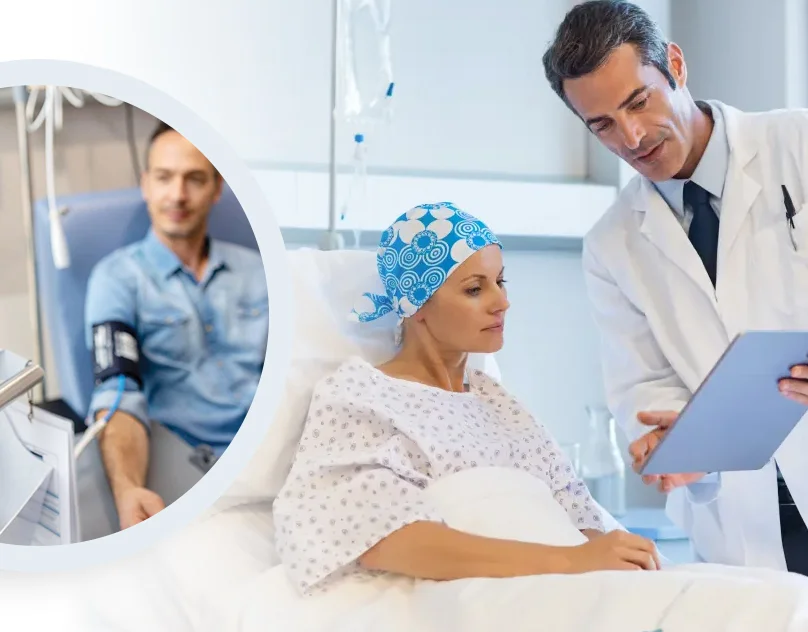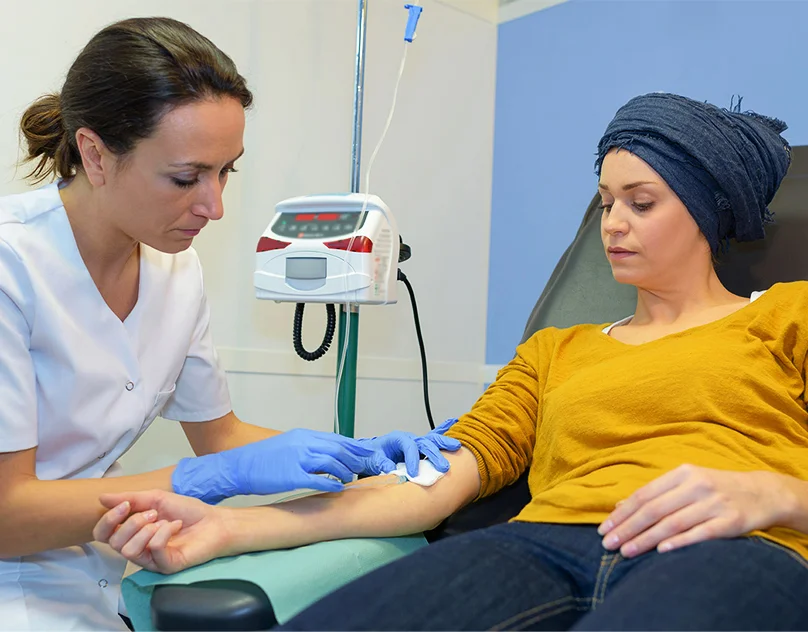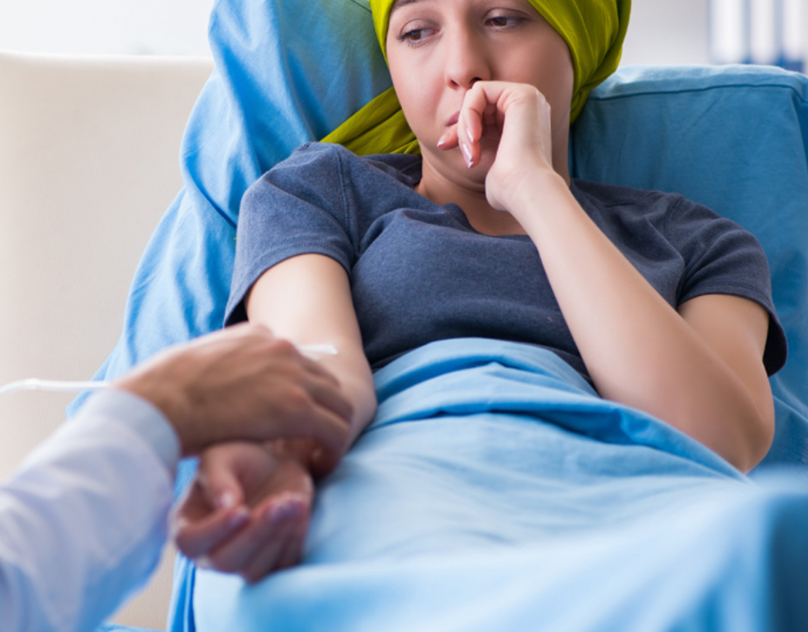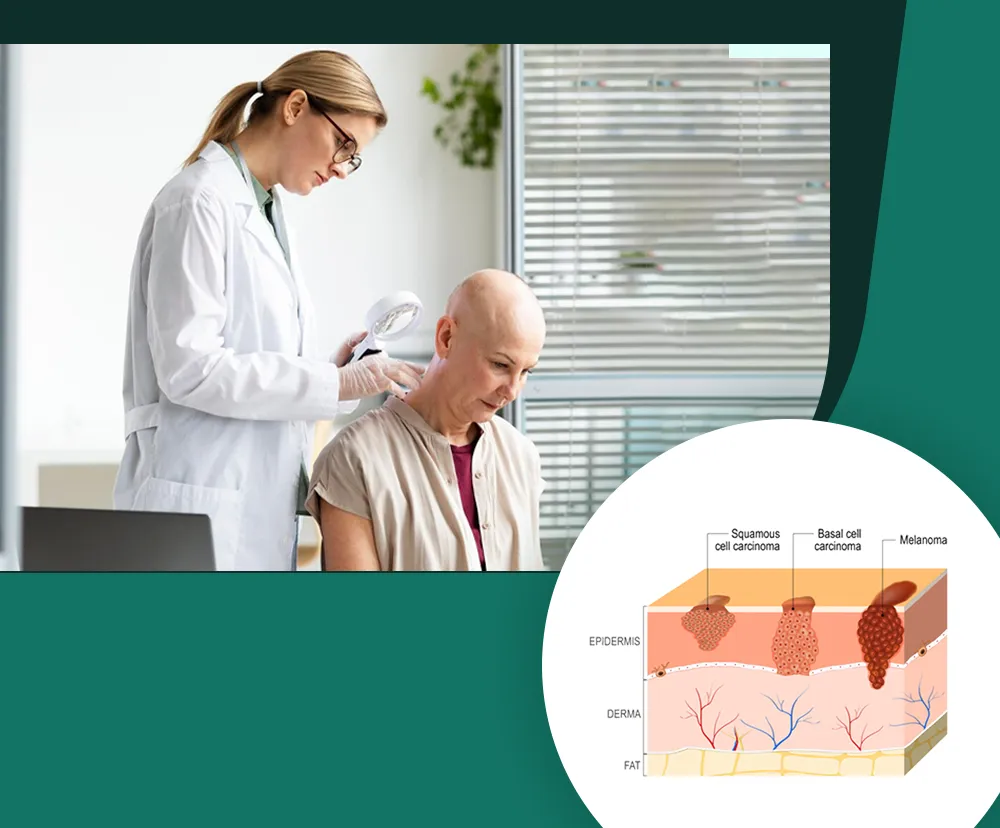What is chemotherapy?
What is chemotherapy?
Introduction
Autoimmune conditions like cancers show up via rapid reproduction of cells in select sites. Such cells may spread over to other organs or may spread locally but deeper into a tissue. Medical research categorizes cancers as malignant and benign types.
Of these aforesaid types, benign ones do not spread to nearby tissues. But you tend to witness a sudden loss of body weight, nighttime sweats, excessive levels of fatigue or an increase in body temperature.
On the other hand, malignant tumour’s show up with a few signs; these include altered texture of skin, wounds that fail to heal or take too long to get cured, blood conditions that can turn you anemic, and chronic hoarseness of voice. To diagnose cancers, physicians order a panel of test. These include scans and tests, done on your blood and tissue samples.
Samples of bodily fluids like saliva, blood or urine are assessed through a microscope. Similarly, samples of tissues are examined to detect likely incidence of cancers. Upon detecting no signs, it is essential to consult your caregivers on a periodic basis.
Cancers are treated through radiation procedures wherein powerful, high-focused rays are used to destroy cancer cells. Another approach is chemotherapy – offered through anti–cancer meditations either taken orally or administered intravenously. Surgical procedures are performed to eliminate cancerous tissues from growing further or from spreading to other nearby organs / tissues
What is chemotherapy?
Chemotherapy is a procedure of treating cancer through medications. This approach is considered one of the effective routes; it however has a few undesired outcomes.
Different types of drugs are used to offer chemotherapy. Each medicine works in a unique manner. Purpose is either to bring about a cure or to extend your lifespan. Drugs used for chemotherapy gain access to your blood, and thus treat – either in full or in part – cancers developing at even remote parts of your body.
Due to this, chemotherapy falls under a mode of cancer treatment called systemic therapy. This is against local therapy that aims to manage a single site: local therapies include modalities like surgery, radiation, to name a few.
Types of chemotherapy
There are several types of chemotherapy treatments. All types focus on killing cancerous cells. In most cases, chemotherapy is administered as a foremost form of treatment. In some instances, it is offered prior to a surgical procedure or radiation-based treatment.
US based-drug approving agency Food and Drug Administration has cleared 140 drugs to treat cancers. Your caregiver will select an appropriate drug based on several factors. These include age, type of cancers, if the condition has spread or not, your wellbeing, etc.
Chemo medications are categorized depending on how they work. Salient types of chemotherapy drugs are anti-cancer antibiotics, alkylating meds, anti-metabolites, steroidal drugs, etc.
Alkylating medications
These drugs impair the structures of cancerous cells. With impaired cells, there is no more divisions of cells or growth of cancers. Alkylating meds are used for treating lung cancers, multiple myeloma, ovarian cancers, etc.
Caveat: Excessive dosing of alkylating meds can cause irreparable damages to your bone marrow. A few side effects this type of chemotherapy: loss of scalp hair, damage of intestinal tissues, decrease in blood cells, onset of blood-related diseases like anaemia, etc.
Plant-derived alkaloids
These meds have proven anti-cancer capabilities. Of these, inhibitors of topoisomerase help block cancerous cells from growing further. These alkaloids – extracted from plants – help to treat gastric cancers, leukemia, lung and pancreatic cancers. These meds are further divided into category I and category II based on enzymes they work upon. Likely undesired outcomes of plant-derived alkaloids are a drop in platelets, abdominal discomforts like dyspepsia coupled with nausea, etc.
Anti-metabolites
These meds work at a DNA-level of cancerous cells and change the way enzymes work with such cells. These are administered for cancers in your gastric tract, ovaries and breasts. You may experience adverse effects like infections, decrease in white cells, hepatic dysfunction, loss of hair, formation of peptic ulcers, etc.
Anti-cancer antibiotics
These are dissimilar to antibiotics taken for infectious conditions. Meds are sourced from microorganisms which aid in killing cancerous cells. These meds uncoil DNAs of cancerous cells and thus prevent their further growth. These are used for treating prostate cancers, colorectal cancers, lung cancers, etc. Beware of potential, counterproductive effects like decreased appetite, formation of oral sores, drop in white and blood cells.
Apart from the above types of chemotherapy, a few drugs used in a targeted fashion to destroy harmful and rapidly growing cells. Targeted therapies aim at cell-level proteins as well as receptors.
Chemotherapy process
Chemotherapy acts at cellular level to treat cancers. Most specifically, it engages through phases known as cell cycles. Drugs used under chemotherapy work at varying phases of cells cycles. Your caregiver has the knowhow to predict the way meds work and stop further growth of cancers. Physicians also know about frequency of dosages of chosen drugs to go lockstep with cell cycles.
Drugs administered for treatment can identify such rapid-growth cells only to some extent. Hence, normal tissues may get damaged as part of treatment. Every cycle of chemotherapy strives to achieve a balance between sparing of non-cancerous cells and destroying cancerous cells.
The good thing however is most of your normal cells will bounce back to life, fully recovering from the adverse effects of chemotherapy drugs. Another good thing is once cancerous cells are damaged, they do not bounce back and cannot replicate themselves.
Chemotherapy side effects
Side effects caused by chemotherapy varies from one drug to another. Commonly encountered adverse effects are difficulties to pass stools, added risks of internal bleeding, a compromised immunity, and damage of nerve cells. Though the above said are quite common, not all patients may experience the entire list of side effects. As chemo meds may also kill normal cells, you may turn vulnerable to infectious conditions. This is mainly because of drugs damaging your immunity cells as well. It is highly recommended to come closer to people with flu, common cold or fever. On sensing symptoms of infections, seek clinical help immediately.
Another side effect of chemotherapy is bruising and bleeding. You are advised to stay careful while working with sharp tools and beware of risks like falling or cutting yourself. If your bruises or wounds are not healing soon, consult your caregiver on an urgent basis.
One other side effect of chemotherapy is loss of hair. This occurs when your follicles are damaged, making your hair weak or brittle. These eventually lead to falling–out of hair. Loss of hair is likely to continue till your treatment is over; hair you lost will grow back once chemotherapy sittings come to an end.
Nerve pain is another side effect of chemotherapy. This is triggered by damages caused to your nerves. It chiefly affects your limbs i.e., legs and arms – it shows up as a tingling sensation. In a few patients, nerve pain has also caused numbness and a pins-and-needles feeling.
Chemo meds are known to change the way your immunity system works. These changes can trigger rashes on your skin or severe levels of itchiness. A few people keep scratching their skin until its bleeds, and this causes added risks of infection. In such cases, you are advised to consult with a certified caregiver who may prescribe anti-itching ointments or lotions.
Chemo meds may lead to formation of sores inside your mouth. At times, these sores can turn severe and can start bleeding. Keep away from harsh mouthwashes, spicy / hot foods, intake of alcohol or such other beverages. Your dentist may recommend a non-aggressive paste and a soft–bristled toothbrush. It is helpful to rinse your mouth with salty water.
Chemo meds can alter the way your lung’s function and thus make it tough to gain access to oxygen. Owing to this, your breathing suffers. Dial 911 if your breathing difficulties continue or if you are having problems in speaking. Call a local clinic or hospital if your skin, nail beds or mouth develop a bluish colour.
A few chemo drugs may also trigger pains. Pains can be of many types – such as migraines, nerve pains, or painful oral parts due to bruises. Your pains tend to increase when cancerous conditions grow further. It is good practice to never stop chemotherapy treatment even when you encounter pains.
In general, seek clinical help on an emergency mode if you sense any of the below side effects after a chemotherapy session: acute headache, traces of blood in stools, darkened urine, non-stop tremors, acute episodes of chills or increase in temperature above 101.5 degrees Fahrenheit.
Related Blogs :

What is chemotherapy treatment?
What is chemotherapy treatment? Introduction In this milieu, what is chemotherapy? Types of chemotherapy Chemotherapy process Chemotherapy side effects Introduction Cancers can show up in any site....


At what stage is chemotherapy used?
At what stage is chemotherapy used? Introduction So, what is chemotherapy? What are the types of chemotherapy? Chemotherapy process At what stage is chemotherapy used? Chemotherapy side...

Education: Master of Public Health (MPH) from the Postgraduate Institute of Medical Education and Research (PGIMER), Chandigarh Experience: A dedicated health writer with 8 years of experience covering a range of health topics, including public health and nutrition. His work has appeared on reputable Indian health websites and journals such as India Health Journal and The Health Times. Ravi also collaborates with Indian health agencies on public health campaigns.


